-
 Bitcoin
Bitcoin $107,352.1067
0.28% -
 Ethereum
Ethereum $2,429.3531
-0.90% -
 Tether USDt
Tether USDt $1.0001
-0.02% -
 XRP
XRP $2.1894
4.62% -
 BNB
BNB $646.7968
0.36% -
 Solana
Solana $147.4290
4.03% -
 USDC
USDC $0.9998
-0.02% -
 TRON
TRON $0.2756
1.52% -
 Dogecoin
Dogecoin $0.1630
1.14% -
 Cardano
Cardano $0.5612
1.18% -
 Hyperliquid
Hyperliquid $37.0580
-0.05% -
 Bitcoin Cash
Bitcoin Cash $496.9410
-0.09% -
 Sui
Sui $2.7318
3.19% -
 Chainlink
Chainlink $13.1503
0.58% -
 UNUS SED LEO
UNUS SED LEO $9.0766
0.55% -
 Avalanche
Avalanche $17.7220
1.46% -
 Stellar
Stellar $0.2380
1.52% -
 Toncoin
Toncoin $2.8439
0.38% -
 Shiba Inu
Shiba Inu $0.0...01143
1.84% -
 Litecoin
Litecoin $85.8053
1.47% -
 Hedera
Hedera $0.1483
2.70% -
 Monero
Monero $314.3240
2.12% -
 Bitget Token
Bitget Token $4.6725
0.77% -
 Dai
Dai $1.0000
0.00% -
 Polkadot
Polkadot $3.3555
1.28% -
 Ethena USDe
Ethena USDe $1.0001
0.02% -
 Uniswap
Uniswap $7.0890
2.64% -
 Pi
Pi $0.5355
-3.40% -
 Pepe
Pepe $0.0...09393
1.06% -
 Aave
Aave $256.8136
-1.90%
Is there a handling fee for Bybit contract grid trading? Cost explanation
Bybit's contract grid trading involves trading, funding, and grid fees; understanding and managing these costs is crucial for maximizing profitability.
May 11, 2025 at 04:01 pm
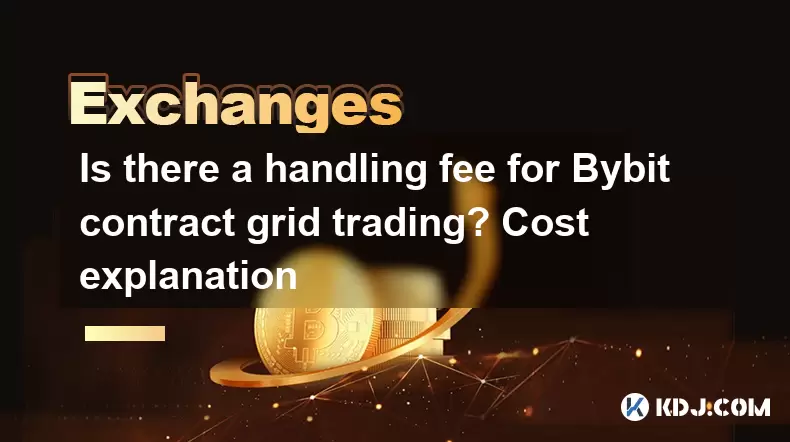
Bybit is a popular cryptocurrency exchange that offers a variety of trading options, including contract grid trading. One of the critical aspects traders consider when using such platforms is the handling fees associated with their transactions. In this article, we will delve into the specifics of the handling fees for Bybit's contract grid trading, providing a comprehensive explanation of the costs involved.
Understanding Bybit Contract Grid Trading
Bybit's contract grid trading is a strategy that allows traders to automate their trading within a specified price range. This method involves setting up a grid of buy and sell orders at predetermined price levels. The goal is to profit from the price fluctuations within this range. While this strategy can be effective, understanding the associated fees is crucial for maximizing profits.
Types of Fees in Bybit Contract Grid Trading
There are several types of fees that traders need to be aware of when using Bybit's contract grid trading feature. These include:
- Trading Fees: These are the fees charged for executing trades on the platform.
- Funding Fees: These are fees related to the funding mechanism in perpetual contracts.
- Grid Trading Fees: Specific fees associated with setting up and maintaining a grid trading strategy.
Trading Fees
Trading fees on Bybit are typically charged as a percentage of the trade volume. For contract grid trading, these fees are applied to each trade executed within the grid. Bybit offers a tiered fee structure based on the user's 30-day trading volume and Bybit Coin (BTC) holdings. The maker fee, which is charged when you add liquidity to the market, is usually lower than the taker fee, which is charged when you remove liquidity.
To give you a clearer idea, here are the typical fee rates for Bybit's contract trading:
- Maker Fee: 0.01% to 0.03%
- Taker Fee: 0.05% to 0.06%
These rates can vary depending on your trading volume and BTC holdings, so it's essential to check the latest fee schedule on Bybit's official website.
Funding Fees
Funding fees are an essential part of perpetual contract trading, including grid trading on Bybit. These fees are designed to keep the price of the perpetual contract in line with the underlying asset's spot price. Funding fees are exchanged between long and short positions at regular intervals, known as funding periods.
The funding rate can be positive or negative, depending on the market conditions. If the funding rate is positive, long positions pay short positions, and if it's negative, short positions pay long positions. The funding fee is calculated as follows:
[ \text{Funding Fee} = \text{Position Value} \times \text{Funding Rate} ]
For grid trading, funding fees can accumulate over time, especially if the grid remains active for an extended period. It's crucial to monitor these fees to understand their impact on your overall profitability.
Grid Trading Fees
Grid trading fees are specific to Bybit's grid trading feature. These fees cover the cost of setting up and maintaining the grid. Bybit charges a grid trading fee based on the total value of the grid. The fee rate can vary, but it's typically a small percentage of the grid's value.
For example, if you set up a grid with a total value of $10,000 and the grid trading fee is 0.1%, the fee would be:
[ \text{Grid Trading Fee} = \$10,000 \times 0.1\% = $10 ]
This fee is charged when you create the grid and may be subject to change based on Bybit's policies.
Calculating Total Costs
To understand the total cost of using Bybit's contract grid trading, you need to consider all the fees mentioned above. Here's a step-by-step guide on how to calculate the total costs:
- Determine the trading fees for each trade within the grid. Multiply the trade volume by the applicable maker or taker fee.
- Calculate the funding fees based on your position size and the funding rate at each funding interval.
- Add the grid trading fee to the total costs when you set up the grid.
Let's look at an example to illustrate this:
- Grid Value: $10,000
- Grid Trading Fee: 0.1% = $10
- Number of Trades: 100
- Average Trade Volume: $100
- Maker Fee: 0.02%
- Taker Fee: 0.05%
- Funding Rate: 0.01% per funding period
- Position Value: $10,000
- Number of Funding Periods: 10
Calculating the total costs:
- Trading Fees: (50 trades $100 0.02%) + (50 trades $100 0.05%) = $0.10 + $0.25 = $0.35
- Funding Fees: $10,000 0.01% 10 = $10
- Grid Trading Fee: $10
Total Costs = $0.35 (Trading Fees) + $10 (Funding Fees) + $10 (Grid Trading Fee) = $20.35
Managing Fees for Better Profitability
To maximize your profitability when using Bybit's contract grid trading, consider the following strategies:
- Monitor and Adjust: Regularly monitor the fees and adjust your grid strategy accordingly. If the funding rate becomes too high, consider closing or adjusting your grid.
- Optimize Grid Parameters: Fine-tune your grid's upper and lower bounds, as well as the number of grids, to minimize the impact of fees.
- Leverage Fee Discounts: Take advantage of Bybit's tiered fee structure by increasing your trading volume or holding more BTC to qualify for lower fees.
Frequently Asked Questions
Q1: Can I reduce the grid trading fee on Bybit?
A1: While the grid trading fee is set by Bybit, you can indirectly reduce the impact of this fee by optimizing your grid strategy and taking advantage of Bybit's tiered fee structure to lower your overall trading costs.
Q2: How often are funding fees charged in Bybit's contract grid trading?
A2: Funding fees are charged at regular intervals, typically every 8 hours, as part of Bybit's perpetual contract mechanism. The exact timing can be found on Bybit's platform.
Q3: Are there any hidden fees associated with Bybit's contract grid trading?
A3: Bybit is transparent about its fee structure, and there are no hidden fees associated with contract grid trading. However, it's essential to stay updated on any changes to the fee schedule.
Q4: Can I use Bybit's contract grid trading on mobile devices?
A4: Yes, Bybit's mobile app supports contract grid trading, allowing you to set up and manage your grids on the go. The functionality is similar to the desktop version, ensuring a seamless trading experience across devices.
Disclaimer:info@kdj.com
The information provided is not trading advice. kdj.com does not assume any responsibility for any investments made based on the information provided in this article. Cryptocurrencies are highly volatile and it is highly recommended that you invest with caution after thorough research!
If you believe that the content used on this website infringes your copyright, please contact us immediately (info@kdj.com) and we will delete it promptly.
- Altcoins, Explosive Gains, and Cryptocurrency: What's the Hype?
- 2025-06-28 21:12:19
- SEI Mirroring Solana: Price Spikes and the Next Big Crypto?
- 2025-06-28 20:52:13
- Pi Network's Pi2Day: Token Tank and Disappointing Rollout?
- 2025-06-28 21:27:13
- PENGU Price Surges: Are Whales Targeting $0.0149?
- 2025-06-28 20:30:12
- Bitcoin Adoption, Portfolio Allocation, and Financial Advisors: A New Era
- 2025-06-28 21:27:13
- Kaanch vs. XRP: Spotting the Next Big Thing & Entry Price Opportunities
- 2025-06-28 21:50:12
Related knowledge
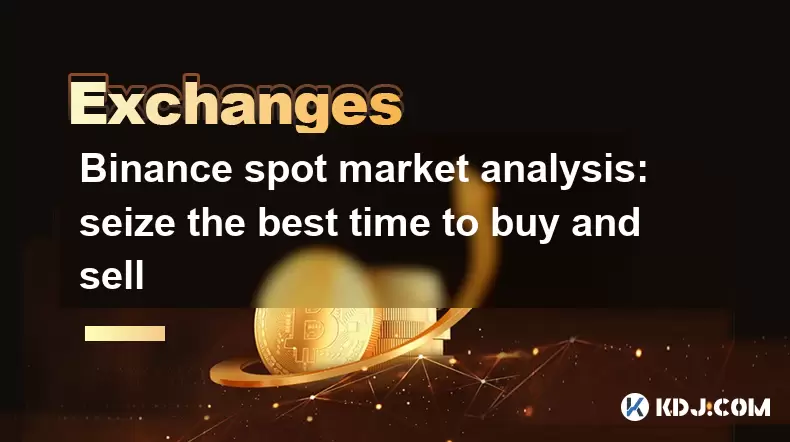
Binance spot market analysis: seize the best time to buy and sell
Jun 19,2025 at 04:56pm
Understanding the Binance Spot MarketThe Binance spot market is one of the most popular platforms for cryptocurrency trading globally. It allows users to trade digital assets at current market prices, making it essential for traders aiming to buy low and sell high. Unlike futures or margin trading, spot trading involves direct ownership of the asset aft...
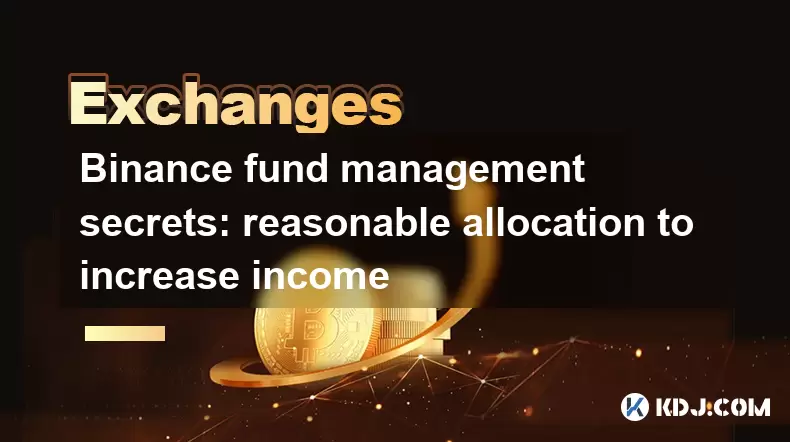
Binance fund management secrets: reasonable allocation to increase income
Jun 22,2025 at 02:29pm
Understanding Binance Fund ManagementBinance fund management involves strategic allocation of your cryptocurrency assets to optimize returns while managing risk. The key to successful fund management lies in understanding how different investment options on the Binance platform can be utilized to create a diversified portfolio. This includes spot tradin...
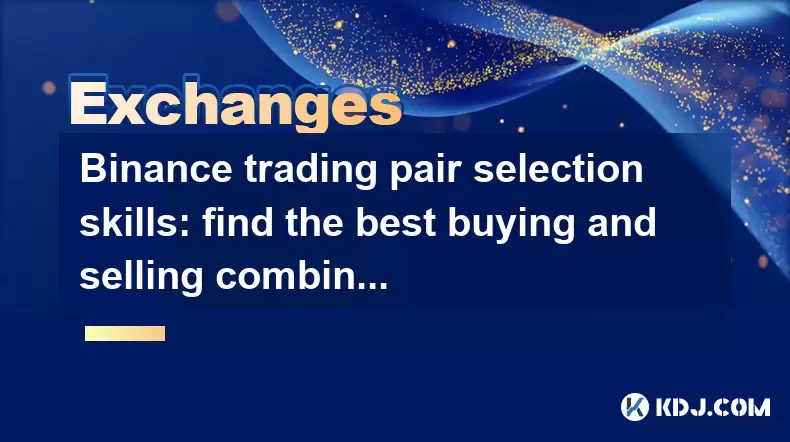
Binance trading pair selection skills: find the best buying and selling combination
Jun 23,2025 at 02:49am
Understanding the Basics of Trading Pairs on BinanceBefore diving into trading pair selection skills, it's essential to understand what a trading pair is. On Binance, a trading pair refers to two cryptocurrencies that can be traded against each other. For example, BTC/USDT means Bitcoin is being traded against Tether. Each trading pair has its own liqui...
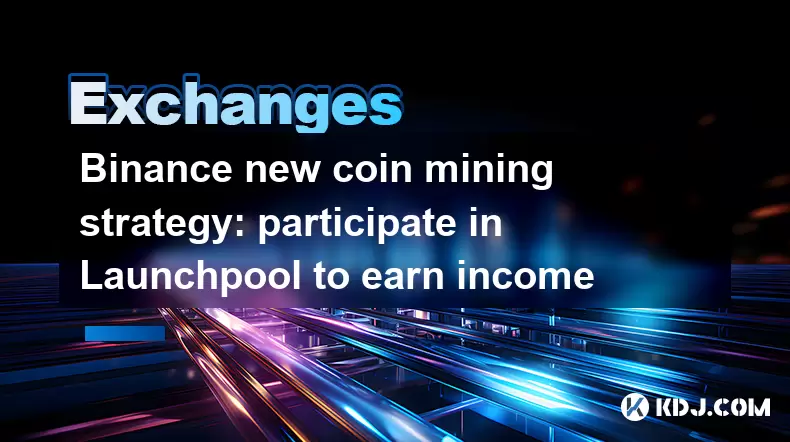
Binance new coin mining strategy: participate in Launchpool to earn income
Jun 23,2025 at 11:56am
What is Binance Launchpool and how does it work?Binance Launchpool is a feature introduced by the world’s largest cryptocurrency exchange, Binance, to allow users to earn new tokens through staking. This platform enables users to stake their existing cryptocurrencies (such as BNB, BUSD, or other supported assets) in exchange for newly launched tokens. T...
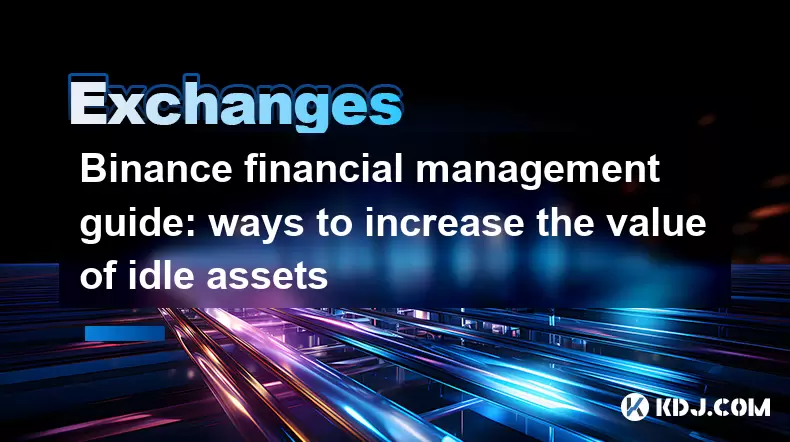
Binance financial management guide: ways to increase the value of idle assets
Jun 19,2025 at 11:22pm
Understanding Idle Assets in the Cryptocurrency SpaceIn the fast-paced world of cryptocurrency, idle assets refer to digital currencies that are not actively being used for trading, staking, or yield farming. Holding these funds in a wallet without utilizing them means missing out on potential growth opportunities. Binance, as one of the leading platfor...
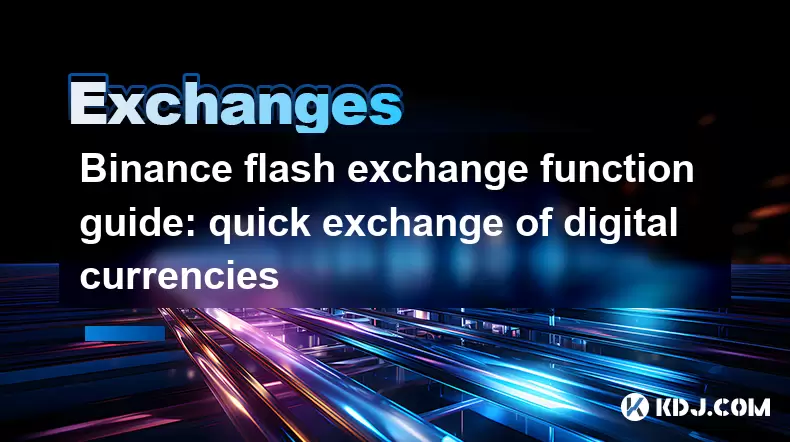
Binance flash exchange function guide: quick exchange of digital currencies
Jun 23,2025 at 12:29pm
What is the Binance Flash Exchange Function?The Binance Flash Exchange function is a powerful tool designed to allow users to instantly swap between supported cryptocurrencies without the need for placing traditional buy/sell orders. This feature simplifies the trading process by offering a direct exchange mechanism, eliminating the requirement to conve...

Binance spot market analysis: seize the best time to buy and sell
Jun 19,2025 at 04:56pm
Understanding the Binance Spot MarketThe Binance spot market is one of the most popular platforms for cryptocurrency trading globally. It allows users to trade digital assets at current market prices, making it essential for traders aiming to buy low and sell high. Unlike futures or margin trading, spot trading involves direct ownership of the asset aft...

Binance fund management secrets: reasonable allocation to increase income
Jun 22,2025 at 02:29pm
Understanding Binance Fund ManagementBinance fund management involves strategic allocation of your cryptocurrency assets to optimize returns while managing risk. The key to successful fund management lies in understanding how different investment options on the Binance platform can be utilized to create a diversified portfolio. This includes spot tradin...

Binance trading pair selection skills: find the best buying and selling combination
Jun 23,2025 at 02:49am
Understanding the Basics of Trading Pairs on BinanceBefore diving into trading pair selection skills, it's essential to understand what a trading pair is. On Binance, a trading pair refers to two cryptocurrencies that can be traded against each other. For example, BTC/USDT means Bitcoin is being traded against Tether. Each trading pair has its own liqui...

Binance new coin mining strategy: participate in Launchpool to earn income
Jun 23,2025 at 11:56am
What is Binance Launchpool and how does it work?Binance Launchpool is a feature introduced by the world’s largest cryptocurrency exchange, Binance, to allow users to earn new tokens through staking. This platform enables users to stake their existing cryptocurrencies (such as BNB, BUSD, or other supported assets) in exchange for newly launched tokens. T...

Binance financial management guide: ways to increase the value of idle assets
Jun 19,2025 at 11:22pm
Understanding Idle Assets in the Cryptocurrency SpaceIn the fast-paced world of cryptocurrency, idle assets refer to digital currencies that are not actively being used for trading, staking, or yield farming. Holding these funds in a wallet without utilizing them means missing out on potential growth opportunities. Binance, as one of the leading platfor...

Binance flash exchange function guide: quick exchange of digital currencies
Jun 23,2025 at 12:29pm
What is the Binance Flash Exchange Function?The Binance Flash Exchange function is a powerful tool designed to allow users to instantly swap between supported cryptocurrencies without the need for placing traditional buy/sell orders. This feature simplifies the trading process by offering a direct exchange mechanism, eliminating the requirement to conve...
See all articles
























































































